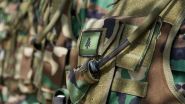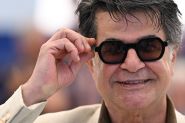
Lebanon Probes Syrian Anti-Sharaa Operations from Its Soil
Bassam Abou Zeid 02/01 19:30

Bassam Abou Zeid 02/01 19:30

Bassam Abou Zeid 2025-12-31 19:15

This is Beirut 2025-12-31 17:05

This is Beirut 2025-12-30 12:10

This is Beirut 2025-12-30 11:55

This is Beirut 02/01 15:45

This is Beirut 02/01 11:35

This is Beirut 2025-12-31 15:10

This is Beirut 2025-12-31 14:20

This is Beirut 2025-12-31 13:10
Maroun Chahine 2025-12-31 11:30
Maria Chami 2025-12-30 13:00
Rayan Chami 2025-12-26 17:10
This is Beirut 2025-12-23 19:10

This is Beirut 2025-12-21 15:05

This is Beirut 2025-12-21 12:05

Eleonore Stephan for Huna Lubnan 2025-12-21 09:05

This is Beirut 2025-12-20 18:05

This is Beirut 2025-12-20 16:05

This is Beirut 02/01 21:05

This is Beirut 02/01 17:55

This is Beirut 2025-12-30 15:30

This is Beirut 2025-12-30 12:25

This is Beirut 2025-12-29 17:10

Makram Haddad 2025-12-19 08:40

Makram Haddad 2025-12-18 08:50

Makram Haddad 2025-12-17 11:30

Makram Haddad 2025-12-16 09:30

Makram Haddad 2025-12-12 11:10

Bélinda Ibrahim 2025-12-17 11:00

Makram Haddad 2025-12-17 08:50

Bélinda Ibrahim 2025-12-11 10:30

Bélinda Ibrahim 2025-12-10 12:00

Bélinda Ibrahim 2025-12-04 15:05